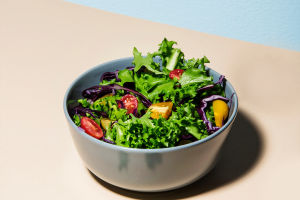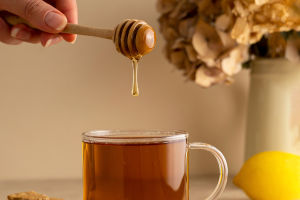Do you have a minute to talk about rice? You probably do, since it’s a food staple for much of the world! In fact, statistically speaking, rice might be your daily go-to.
This humble grain has nourished civilizations for centuries, so much so that it helped hold together the stones used to build the Great Wall of China!
Whether served up in biryani, risotto, or a simple bowl of steamed rice, it's a dish for the masses and a delicacy in royal kitchens. Let's take a closer look at the different types of rice you’ll encounter around the globe and how to cook them.
Rice Is Everything
Rice is an incredibly diverse grain, with most varieties falling under the species Oryza sativa, first domesticated thousands of years ago. Today, there are more types of rice than you might imagine, each with unique characteristics that make them perfect for various dishes.
This guide will walk you through the most common types of rice and give you some tips on how to cook them to perfection, so you can bring a bit of rice-based tradition into your kitchen.
Long-Grain Rice
When you think of fluffy, non-sticky rice, long-grain varieties come to mind. This type of rice has a higher ratio of amylose (the starch responsible for separating the grains), so it remains light and fluffy when cooked. Long-grain rice is often aromatic and adds depth of flavor to many dishes. The two most popular long-grain rice varieties are Basmati and Jasmine.
Basmati is long, delicate, and slightly earthy, popular in South Asia and the Middle East.
Jasmine rice is plump with a fresh, floral aroma, mainly found in Southeast Asia.
For a truly authentic dish, always use one of these varieties for dishes like biryani, pilaf, and fried rice. In the U.S., you’ll also find Texmati (a basmati variant) and Carolina Gold, which is a heritage rice with notes of roasted nuts and bread.
Soupy Rice
If you're in the mood for something creamy, soupy rice is the way to go. Think of Italian risotto, asopao, or juk (a type of rice porridge). These dishes require rice that can release its starch and absorb a cooking broth, becoming tender and flavorful. The go-to varieties for soupy rice are medium-grain, like Carnaroli, Vialone Nano, and Arborio.
These rice varieties hold their shape while creating a rich, creamy texture, perfect for risotto-style dishes that are both comforting and indulgent.
For those who love crispy rice, paella is the dish for you. In Spain, Bomba and Calasparra are the best varieties for making paella, thanks to their ability to absorb liquid without turning mushy. These short-grain rices also form a signature crispy crust at the bottom of the pan, making the dish extra special. Paella rice is a key ingredient in creating that perfect balance between tender rice and crispy goodness.
Short-Grain Rice
Short-grain rice tends to stick together more because it has a higher concentration of amylopectin. This makes it the perfect choice for dishes where rice clumps together—like sushi. A popular variety of short-grain rice is Calrose, widely used in the U.S. for sushi and other Asian dishes.
Short-grain rice is also ideal for chilled dishes like rice pudding or salads. Varieties like Ponni in Tamil Nadu, India, are used to make porridge and are great for digestible, easy-to-eat meals.
Sticky Rice
Sticky rice, also known as glutinous rice, is famous for its chewy texture. Despite the name, it doesn’t actually contain gluten. Instead, it’s packed with amylopectin, a starch that gives it its signature stickiness. In Thailand, sticky rice is a must-have with many savory dishes, while in China and Cantonese cuisine, it is used to wrap meat and mushrooms in lotus leaves.
For a sweet touch, sticky rice is paired with mango or used to make mochi, a chewy dessert found across East Asia. You’ll also find black sticky rice, which retains its bran and has a more complex, fruity flavor.
Whole-Grain Rice
Unlike white rice, whole-grain rice retains its germ and bran, offering more fiber, vitamins, and minerals. While it takes a little longer to cook, it’s worth the wait for the added nutritional benefits. Brown rice is the most common, but more specialized types like Himalayan red rice and forbidden rice have a deeper, nuttier flavor that makes them perfect for hearty dishes and salads.
Whole-grain varieties like Wehani (a type of brown basmati) add complexity to rice dishes with their roasted, nutty undertones.
Wild (and "Wild") Rice
Wild rice isn’t technically rice—it’s a grass from the genus Zizania. Still, it cooks like rice and retains its bran, making it a nutritious option. Although most "wild rice" on the market is cultivated, real Native American wild rice is harvested by hand in the Great Lakes region and has a unique, fresh flavor.
Dimensionally Reconfigured Rice
Sometimes, rice undergoes processing that alters its shape or texture. Puffed rice, for example, is made by heating rice kernels until they pop, creating an airy snack often mixed with spices in South Asia (known as bhel puri). Poha, or flattened rice, is another common variety in South Asia, often used for quick breakfasts or snacks.
Par-Cooked Rice
Finally, there’s parboiled rice, which is partially cooked in the husk before being dried. This process locks in nutrients and speeds up cooking time. Parboiled rice is quick, nutritious, and makes a great addition to dishes like congee.
So next time you're choosing rice, remember: there’s a world of options, each one designed for a specific kind of dish. Whether you're crafting a delicate sushi roll or whipping up a comforting bowl of risotto, choosing the right rice can make all the difference. So, let’s get cooking!


